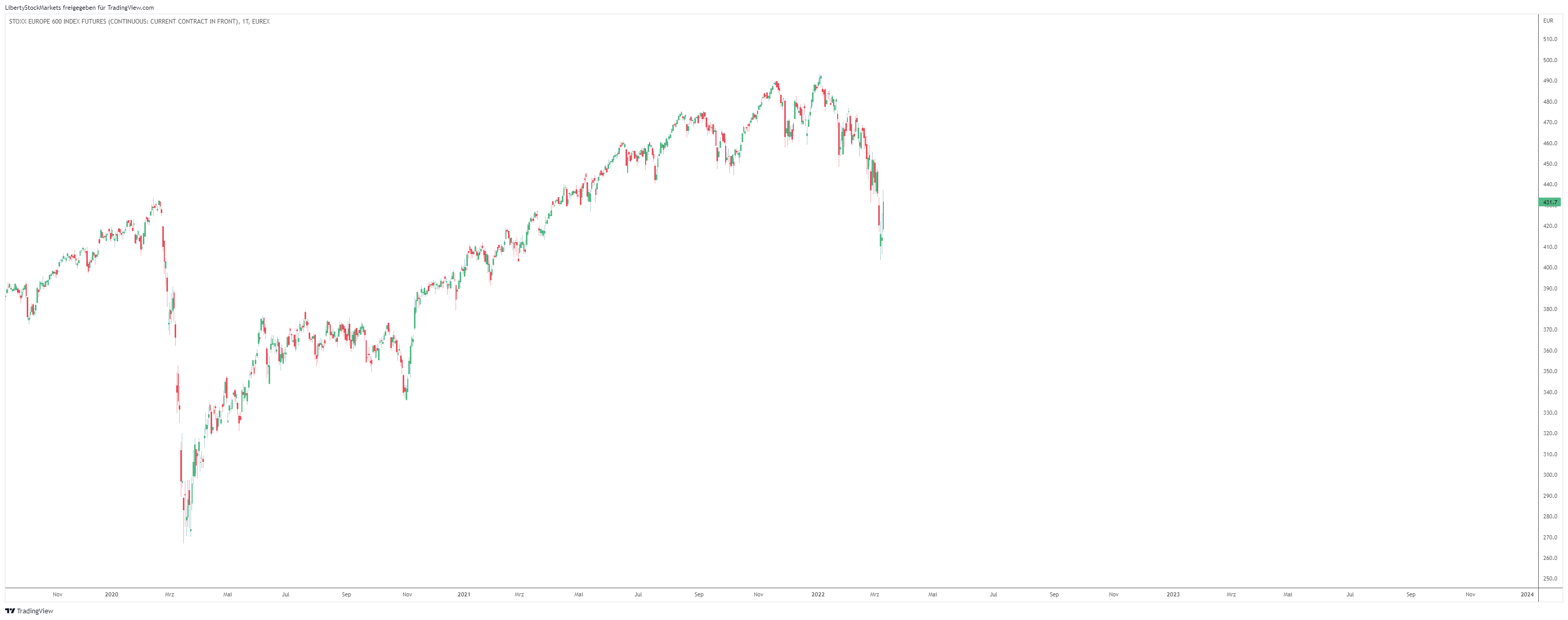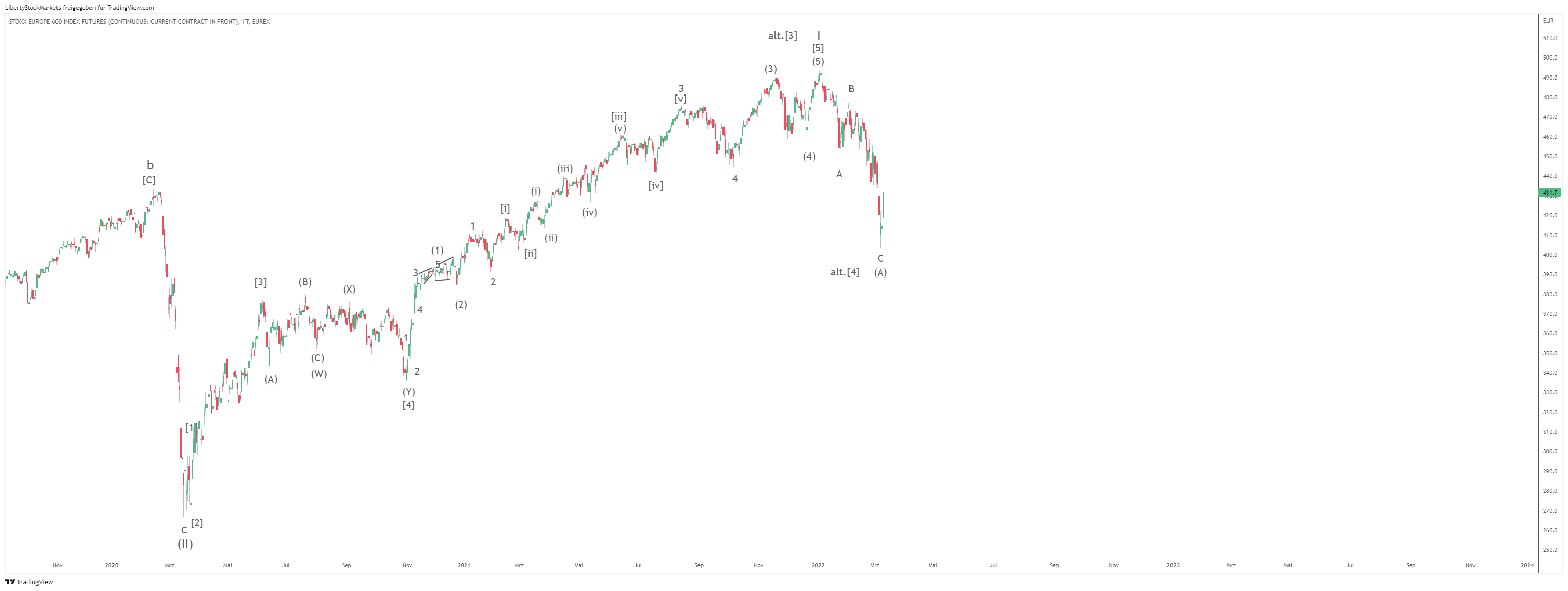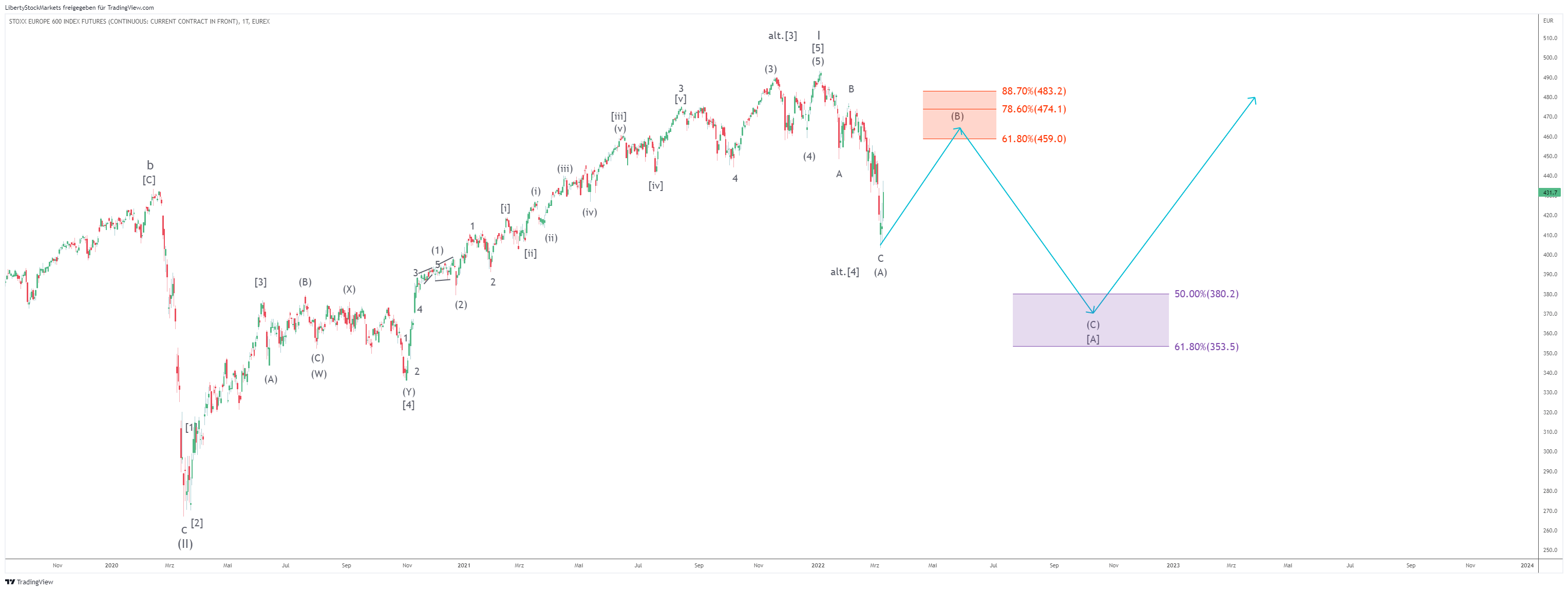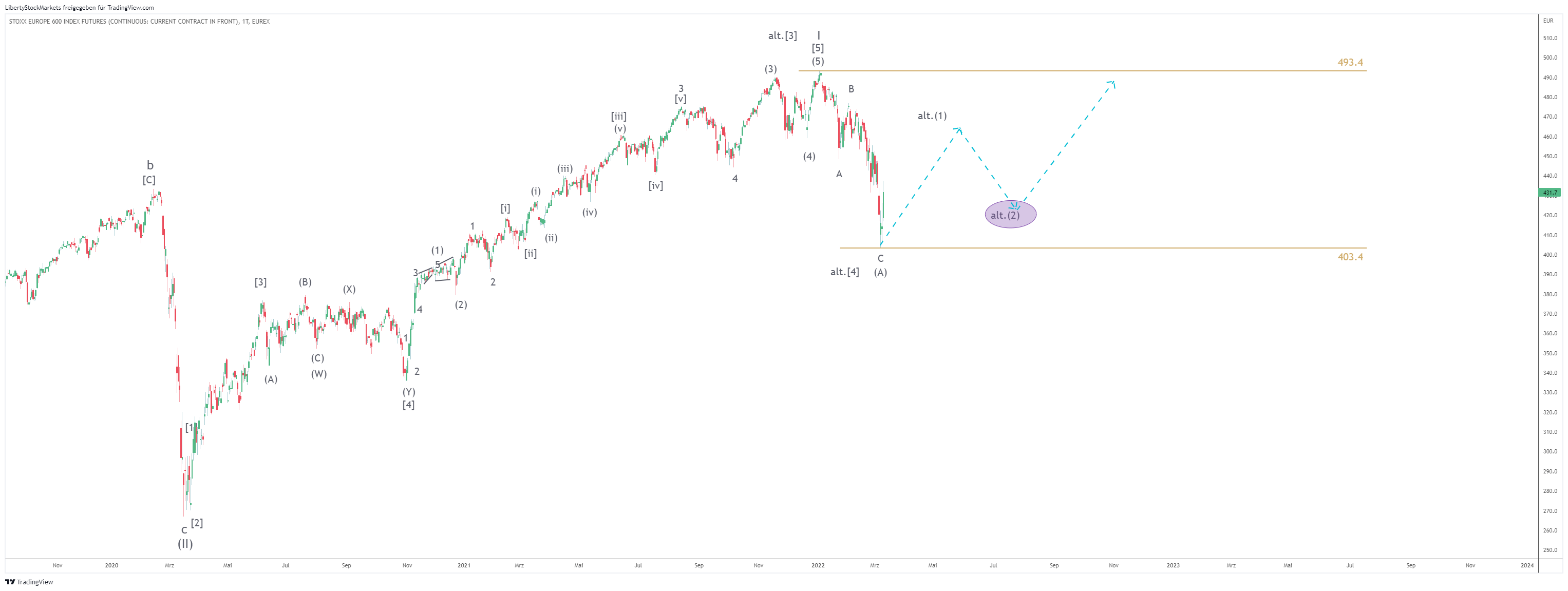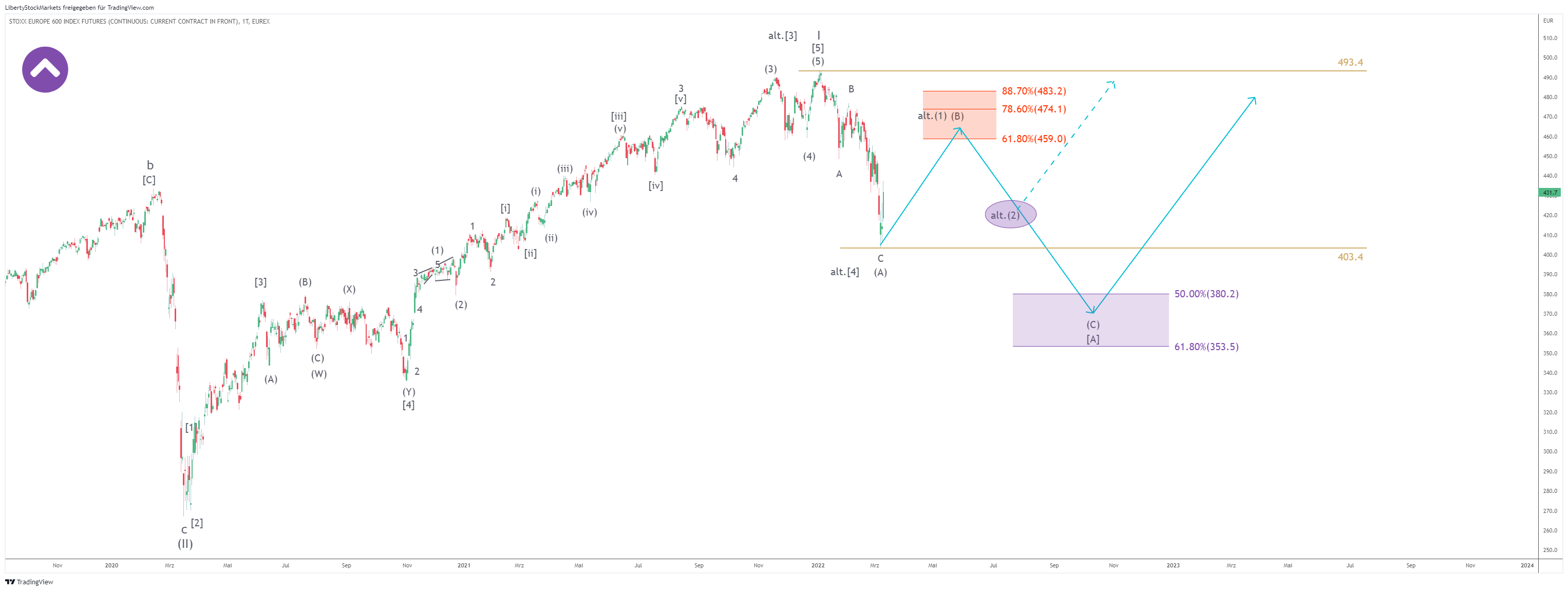BLACK DEAL – Up to 35% off – Code: 12345 – Ends Sunday, November 30, 2025 – BLACK DEAL
Our successful method.
This is how it works.

2 How do we find and value interesting stocks?
We are your financial navigator for better decisions.
The first step in our selection process is a basic company screening. Here we ask very basic questions, such as the following:
- What does the company produce?
- Do we understand it or the products?
- Can the products or the business model be copied?
- Does the company have a dominant market position?
- What is the competitive environment like?
- How is the management set up?
- What do the company’s balance sheets look like?
- What is the company’s outlook, both in terms of figures and market opportunities or risks?
- What does the share price look like? Is the share price ahead of a major price decline, in the middle of one, or at the beginning of a price increase?

The first step in our selection process is a basic company screening. Here we ask very basic questions, such as the following:
- What does the company produce?
- Do we understand it or the products?
- Can the products or the business model be copied?
- Does the company have a dominant market position?
- What is the competitive environment like?
- How is the management set up?
- What do the company’s balance sheets look like?
- What is the company’s outlook, both in terms of figures and market opportunities or risks?
- What does the share price look like? Is the share price ahead of a major price decline, in the middle of one, or at the beginning of a price increase?
A graphic overview of our decision-making process:
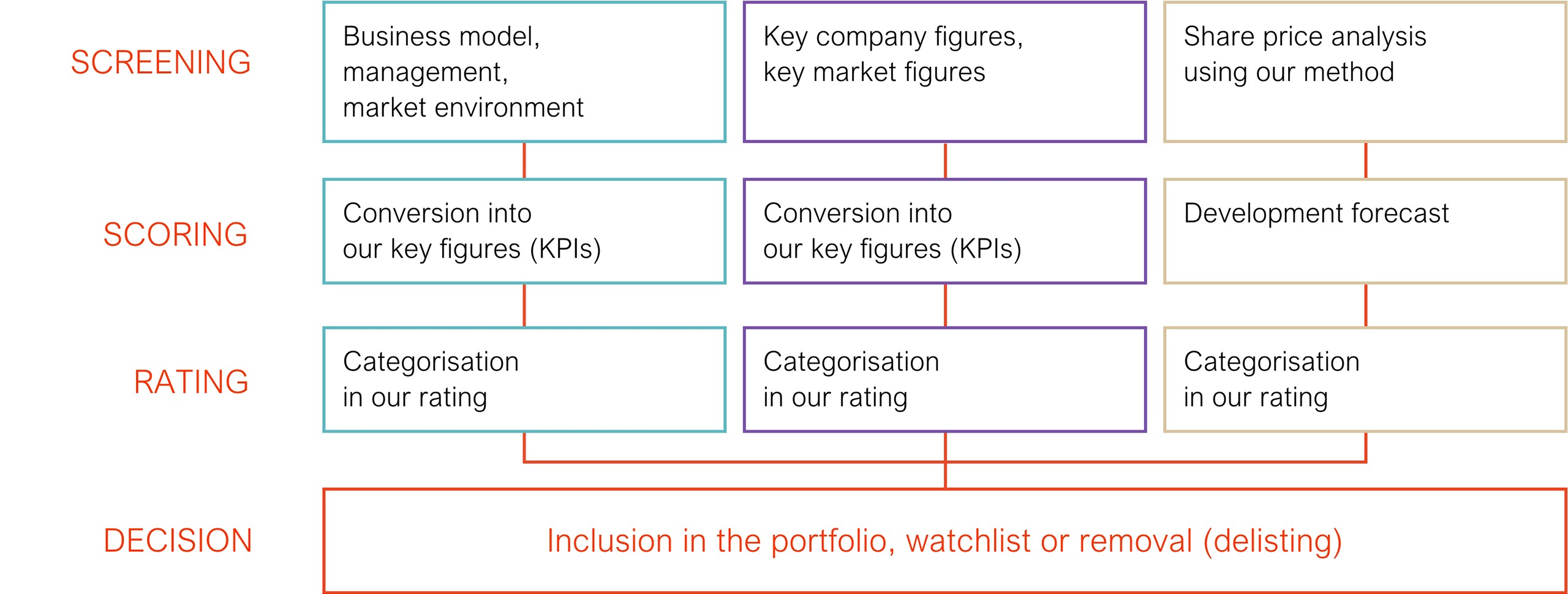
3 We don’t just talk, we act!
Our sample portfolio at your fingertips.
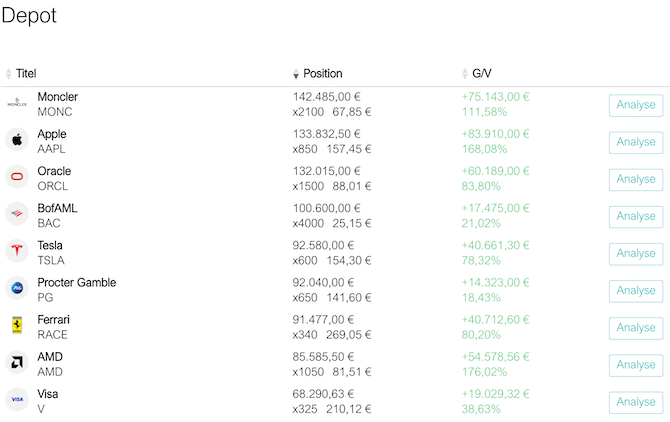
Liberty Stock Markets sample portfolio.
How is our model portfolio structured?
Our model portfolio is structured like any real portfolio. Namely as an ongoing portfolio with a savings ratio. We do not start afresh every year, but continue to maintain our portfolio endlessly. There is no starting value and no target value, but a constantly growing portfolio through monthly savings deposits and reinvested profits, just as everyone can and should do.
In our portfolio overview, you can see at any time which securities we currently hold and which we have bought or sold, when and on what terms.
Liberty Stock Markets stands for top performance and transparency.
You can measure us by our actions every day.
A long-term project from which everyone benefits.
4 Knowing where the market is going is our key to success!
The analyses.
Our analyses of indices, ETFs and equities form the core of our business. We set ourselves apart from the market with our analyses because we already know where the market is going and where the important points are that require our action.
We know exactly when to buy in order to achieve the highest possible return.
We know exactly where we need to exit or realize profits. Our mathematical-analytical method allows us to
us to do what most people can’t, namely act counter-cyclically: buy at bottoms and sell at tops.
We provide you with fully understandable and clear analysis on numerous indices, ETFs and a wide range of stocks.
These are all the stocks that we currently hold in our portfolio and all the stocks that are on our watchlist.
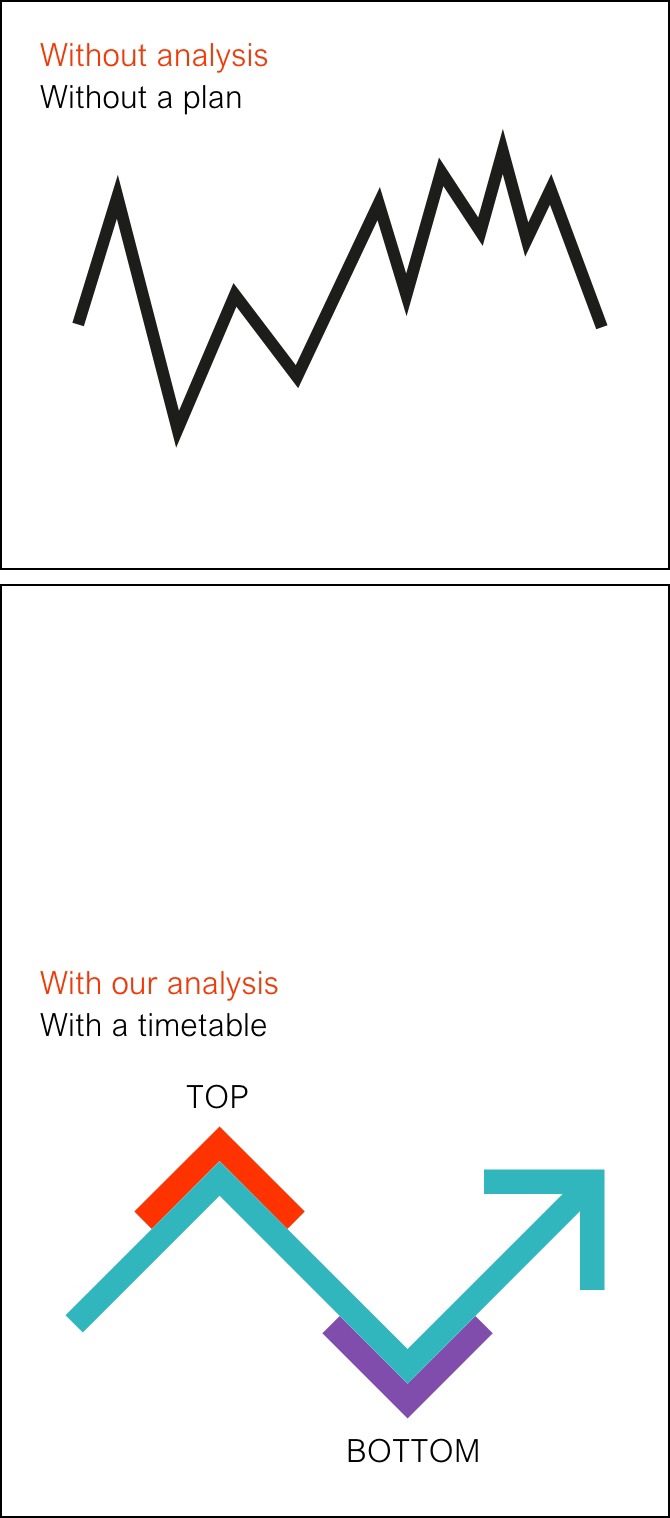
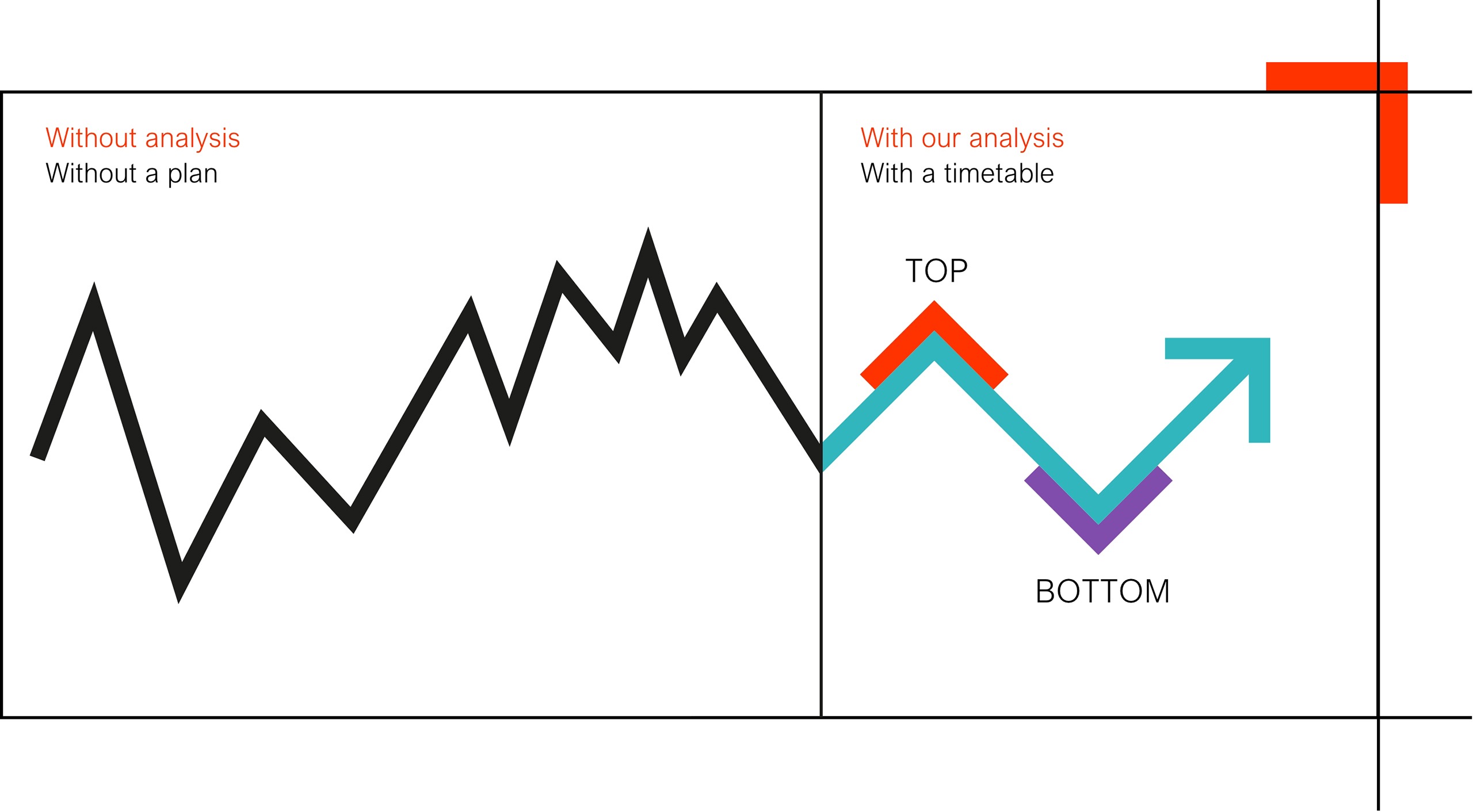
Our analyses of indices, ETFs and equities form the core of our business. We set ourselves apart from the market with our analyses because we already know where the market is going and where the important points are that require our action.
We know exactly when to buy in order to achieve the highest possible return.
We know exactly where we need to exit or realize profits. Our mathematical-analytical method allows us to
us to do what most people can’t, namely act counter-cyclically: buy at bottoms and sell at tops.
We provide you with fully understandable and clear analysis on numerous indices, ETFs and a wide range of stocks.
These are all the stocks that we currently hold in our portfolio and all the stocks that are on our watchlist.
How our analysis works
Explained in 6 steps:
- 1 1
- 2 2
- 3 3
- 4 4
- 5 5
- 6 6
What are candle displays?
The price performance of securities tradable on the stock exchange (e.g. ETFs and shares) is shown in so-called candlestick charts.
Each candle represents a unit of time. For example, a day. The candles are lined up in the chart according to their price position and thus produce the price trend.

If the candle is green, the closing price (in our example after one hour of trading) is higher than its start. A higher price level than at the beginning of the measured hour.
If it is red, the closing price is lower than the starting price.
The basic idea
Our method is based on the further development of the so-called Elliott Wave Theory, which was created by Ralf Nelson Elliott in the 1930s.
– The reasons for trading lie in the psychology of investors and not in events or (stock market) news.
– Investors’ actions leave patterns in the price charts.
– These patterns are based on mathematical relationships.
– Like all other natural events, they can be explained using mathematics.
– Our calculation of price movements and our forecasts are based on this.
The colored boxes
The red boxes
indicate an expected turning point in the price on the upside. For us, this area describes an opportunity to sell or partially sell in order to realize profits. Depending on the individual case, however, it may also make sense to hold the position.
The purple boxes
indicate an expected turning point for the price on the downside. For us, this area describes an opportunity to buy.
This is a so-called bottom, as the price is likely to rise from there over a long period of time.
For us, these are the perfect buying regions for long-term investments.
Arrows and lines
The dotted arrows
show the alternative route (alt.) that the course will take if our first forecast no longer applies.
The purple circles indicate significant turning points on the alternative route. They are analogous to the red or purple boxes (see above).
The horizontal lines
indicate important price levels in the chart. For example, resistances above which the price must rise or supports below which it should no longer fall.
Wedges
The wedge upwards in the purple circle
symbolizes a rising main trend
This symbol can be found at the top left of the chart
The downward wedge in the red circle
symbolizes a falling main trend
This symbol can be found at the top left of the chart
6 And where will the journey take us in the future?
Our watchlist.

Selecting the right stocks is a key part of our expertise. This is why we also monitor numerous shares and ETFs that we consider promising but are not yet ready for our portfolio.
Our watchlist contains all the titles that we might buy in the future. Of course, we are also happy to share these with you. And best of all: we analyze all the stocks on our watchlist on a daily basis, as well as the stocks that are already in our portfolio. Perhaps you already have one or two in your portfolio.
7 Our golden rules of share and ETF trading
Here we briefly present our golden stock trading rules, which we strictly adhere to once we have selected our stocks. In this way, we ensure that we strategically minimize our risk.
8 The basics of building up solid assets
You can see the ideal asset distribution in the following overview
Depending on your basic financial situation, it is always advisable not to put all your eggs in one basket, but to include several.
There is probably no single best way to build up a solid fortune. Nevertheless, there are a few important things we would like to share with you.
The following example reflects the ideal way to invest your money.
This may seem difficult at first glance. But it is not, if you are consistent and have enough time (more than 10 to 15 years).
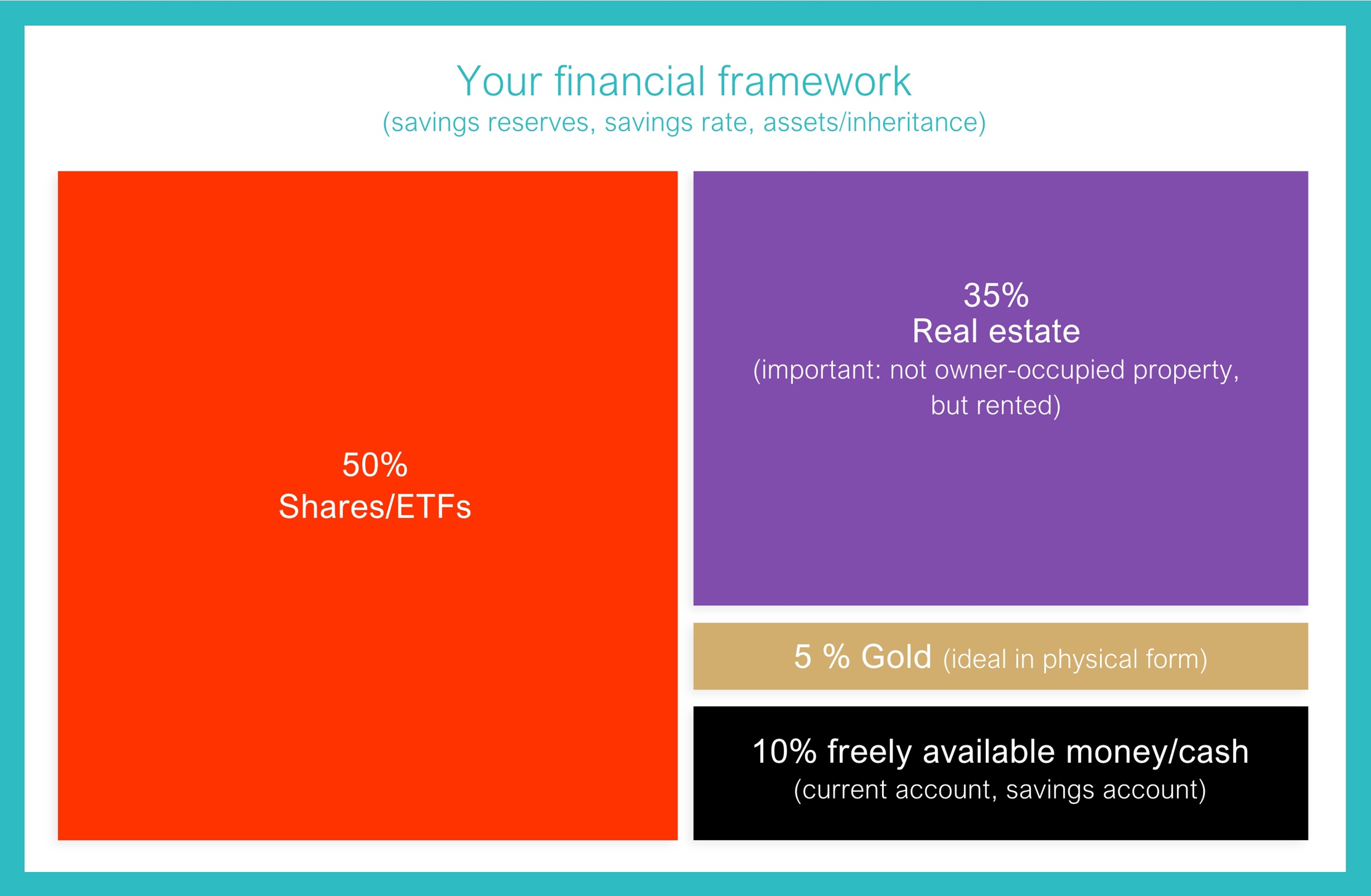
Shares and ETFs
Both shares and ETFs are becoming increasingly popular. Even comparatively small sums of money can generate high profits over time. You can put as much money aside each month as you can spare. You can invest it whenever opportunities arise. Everything is completely flexible and simple. Over 12 million people in Germany already trade shares and ETFs*. And the trend is rising sharply.
The advantages of shares and ETFs are obvious
Thanks to the internet, trading shares and ETFs has become very easy. Everything can be done conveniently via computer or smartphone. You can access your shares almost anywhere in the world at any time. You can trade them daily, except on public holidays, from Monday to Friday during the respective stock exchange opening hours.
We don’t think the risk associated with shares and ETFs is particularly high. Or how likely do you think it is that Apple, Tesla or McDonald’s will go bust in the next 10 years? Rather low, we would think. Of course, we don’t have any certainties either, but based on our calculations we assume that we can expect strong growth rates that are higher than for other asset classes such as real estate. All the more reason to set the right course now.
The dividend is often underestimated. This is a form of interest on your shares. You automatically receive money several times a year for each share you hold, simply because you hold the share. Incidentally, this also applies to most ETFs.
The most important thing is the strategy. And you have us for that. We focus on broad diversification in order to minimize risks. We achieve this, for example, with an ETF on the broadest and strongest index in the USA, the S&P 500.
When putting together our portfolio, we not only make sure that we only hold shares in companies that have great potential and a solid business, but also that they are not dependent on each other. McDonald’s and Apple operate in completely different sectors.
The disadvantages of shares and ETFs
As with any other business, you are fully responsible for yourself and your investments. You have to decide for yourself when and where to get in and out. But that’s why you have us now.
*Source: Deutsches Aktieninstitut
Real estate
How many Germans do you think own a property? You will probably estimate the percentage far too high. Unfortunately, the Germans are at the bottom of the European rankings with a share of 51.1%, behind Austria (55.2%) and ahead of Switzerland (42.5%). By comparison, in Romania (the leader in Europe) over 95% of the population own their own property*.
The advantages of real estate
If the property is rented out rather than used by the owner, it can be financed by the rental income. This means you don’t have to use your own funds. This type of financing allows you to build up solid capital over the years. In old age, this is a good reserve and also good security that you can use for other projects at the bank.
The disadvantages of real estate
You enter into a long-term commitment with the financing and you can’t take the property with you. It is and remains in one place. If you want to live abroad, you may have to look for new tenants from there. If you have bad tenants, you may have to spend money on renovations or even refurbishments. Although rent losses are rare, they are also part of your risk. In addition, the market is not as easy to predict as the stock market. Whether your property will increase in value is not certain.
*Source: Eurostat (as at: 2019)
Gold
The reason why central banks, for example, also invest a portion in gold is material hedging. However, we do not consider the collapse of the Western world to be very likely. We therefore believe that only around 5% of assets in gold makes sense.
